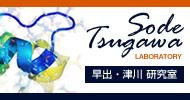Team:Tokyo-NoKoGen/contents page sample
From 2012.igem.org
- overview
- lux operon
- rhodopsin
- modelling
- Future work
- project
'''"E. communication": ''E. coli'' that is capable of communication.'''
1.Would any of your project ideas raise safety issues in terms of:
researcher safety,
public safety, or
environmental safety?
Our project is not expected to raise any safety issues, with respect to the safety of the researchers or the general public. We also do not expect any environmental issues or any risks of malicious use by individuals.
We will only use typical laboratory E. coli strains (e.g., DH5α) and the engineering experiments we plan to carry out will not introduce any genes that are related to pathogenicity or virulence, or confer any selective advantage were they to be inadvertently or intentionally (maliciously) released into the environment.
Our laboratory work will be carried out in the laboratories of Prof. Sode (Chief instructor), Prof. Ikebukuro (instructor), Associate Prof. Tsugawa, and Assistant Prof. Ferri (Organizer), which have a biosafety level 2 facility to handle microorganisms and perform genetic engineering experiments. All the bacteria we handle, whether genetically modified or not, will be either stored at -80°C for future use or disposed of after autoclaving.
2.Do any of the new BioBrick parts (or devices) that you made this year raise any safety issues?
No,they don’t. Our BioBrick parts do not possess any safety risk for environment and researches. We will make a new BioBrick part that emits bioluminescence. This part is natively expressed in Photobacterium that is non-harmful marine bacterium and we will clone it from that bactera. We are also trying to make light receptor to regulate gene expressing network. We will use BioBrick parts that have already registered as a material to make the network. Thus our new BioBrick part will not raise any safety issues.
3.Is there a local biosafety group, committee, or review board at your institution? If yes, what does your local biosafety group think about your project?
Yes, our institution has own biosafety rules. The Gene Research Center of the Tokyo University of Agriculture and Technology Research Center for Science and Technology [http://www.tuat.ac.jp/%7Eidenshi/index.html (only in Japanese)] deals with biosafety issues. All students have to read the provided guidelines and apply for permission to do genetic engineering before we actually start experiments. All our members had read the guidelines and signed for agreement, and we all have been permitted to carry out genetic engineering experiments.
We did not discuss our project directly with our Institutional Biosafety Committee, but we do follow their regulations and guidelines. Our instructors are monitoring our experiments closely, and they have not identified any safety issues.
 "
"





